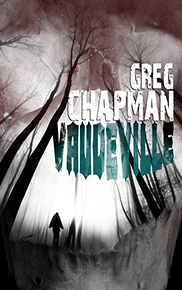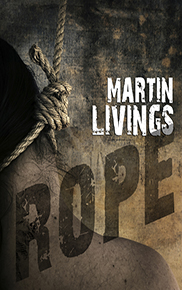DISCLAIMER: Thirteen O’Clock is managed by Alan Baxter, Felicity Dowker and Andrew McKiernan as Contributing Editors. While the Contributing Editors’ roles at Thirteen O’Clock are editorial and critique, all three are primarily writers. It is inevitable that their own work will form part of the Australian and international dark fiction publications which are Thirteen O’Clock’s focus, and as such it is also inevitable that their work will be reviewed at Thirteen O’Clock (to prohibit this would not only be unfortunate for Baxter, Dowker, and McKiernan themselves, but for their hardworking editors and publishers).
Thirteen O’Clock will always have a third party contributor review the Contributing Editors’ work. Such reviews will be unedited (aside from standard corrections to typos and grammar), posted in full (be they negative or positive), and will always be accompanied by full disclosure of Baxter, Dowker, and McKiernan’s place at Thirteen O’Clock. At no point will Baxter, Dowker or McKiernan review their own work.
 The Darkest Shade of Grey
The Darkest Shade of Grey
A novella by Alan Baxter
Reviewed by Robert Hood
“Noir” is a term that is somewhat loosely used these days, especially as cross-genre experimentation continues to attack whatever subgenres hold still long enough to get suitably mugged. Naturally, authors cherry-pick individual aspects of the noir form’s “original” manifestation (essentially 1940s and 50s “film noir”) to apply to their own work, thereby blurring the edges of the definition somewhat — the most common ingredients being a tone of dark, urban cynicism and tough-talking PIs (or some other investigative types) vaguely reminiscent of Raymond Chandler’s Marlowe or Dashiell Hammett’s Sam Spade. But however loose the definition might become, there’s no denying the appeal of the shadowy crime-based format. Whether it melds with zombies, ghosts, robots, future dystopias (as in Blade Runner), Batman sweeping through the dark streets of Gotham City or re-worked fairytales, combining fantastical elements with the noir tropes and their air of claustrophobic darkness has proven extremely popular.
Alan Baxter’s novella The Darkest Shade of Grey, serialised on the Red Penny Papers website and now available as an ebook, boasts many of the key elements of noir fiction, adroitly combining them with other tropes – in particular the currently popular stereotype of a troubled protagonist with a psychic “ability”. David Johanssen is a journalist whose life has been rent asunder by his own flirtation with the supernatural, in the form of a Ouija board and an entity by the name of Lamashtu. Lamashtu’s femme fatale presence has tempted him into a mire of obsession, prescient vision and failed relationships, just as the noir hero becomes a victim of his own moral failures and is led astray by a sexy female client or victim. Now, living a despairing existence in a Sydney cityscape filled with demons (mostly of his own making), Johannsen struggles to find a way out, only to slide deeper and deeper into the quagmire. In true noir fashion, only bourbon offers him momentary escape from his self-loathing.
The novella begins with the bloody murder of a young woman in a Kings Cross backstreet – a murder which Johanssen’s intuition tells him is the tip of a Big Story that will put him on a better footing with his increasingly impatient editor – and leads him via a potentially insane hobo and much death to a reality he never expected to find and may not survive. The story has a strong tidal flow that drags the reader through to its imaginative climax. The investigative groundwork of the plot runs smoothly and without overt contrivance, and the revelations of the end don’t disappoint. Like the classics of film noir, which were filmed in black-and-white, Baxter’s noir plot teaches his protagonist that what seems to be black can in fact be merely the darkest shade of grey.
As good pulp fiction should be, Baxter’s story is fast-paced, yet the author maintains a noir atmosphere effectively, not simply via plot maneuvers and archetypal characters, but through snatches of effective description and a dark sensibility that is integrated into the details. He’s not afraid to stop and smell the waste run-off occasionally. If Baxter’s use of language can veer toward bare cliché at times, it is a form of genre-based cliché that mostly feels authentic and you go with it easily. Indeed Baxter gives enough individual distinctiveness to his secondary characters to make us accept them, and though Johannsen himself is a stereotype (the classic noir loner, lost to a dark, and ever-darkening reality), Baxter develops the elements that make up that stereotype into a character who is at least as believable and pitiable as your standard noir hero. Then there’s the City – an important character in noir stories. As a Sydneysider it is fascinating to watch Baxter transform Sydney into a noir hell. Indeed it would have been a bonus to see him develop this element further, if he’d had the space to do so.
In the end, The Darkest Shade of Grey may not be the ultimate example of supernatural noir, but it is certainly a good example, an enjoyable and engaging pulp-inspired read that fulfills the promise of its evocative cover and its effective title, with some ideas that linger in the mind long after the lights go out.
***
Robert Hood is a writer of speculative fiction in all its forms, though he veers to the dark side more often than not. He loves noir fiction and mixing-and-matching the genres. Check out some of his collected stories in Creeping in Reptile Flesh (Morrigan Books, 2011). A dark fantasy novel, Fragments of a Broken Land: Valarl Undead, is due out in 2012 from Borgo Press (US). His website can be found at www.roberthood.net and he occasionally posts reviews there and on his blog, Undead Backbrain.
.


 The Darkest Shade of Grey
The Darkest Shade of Grey